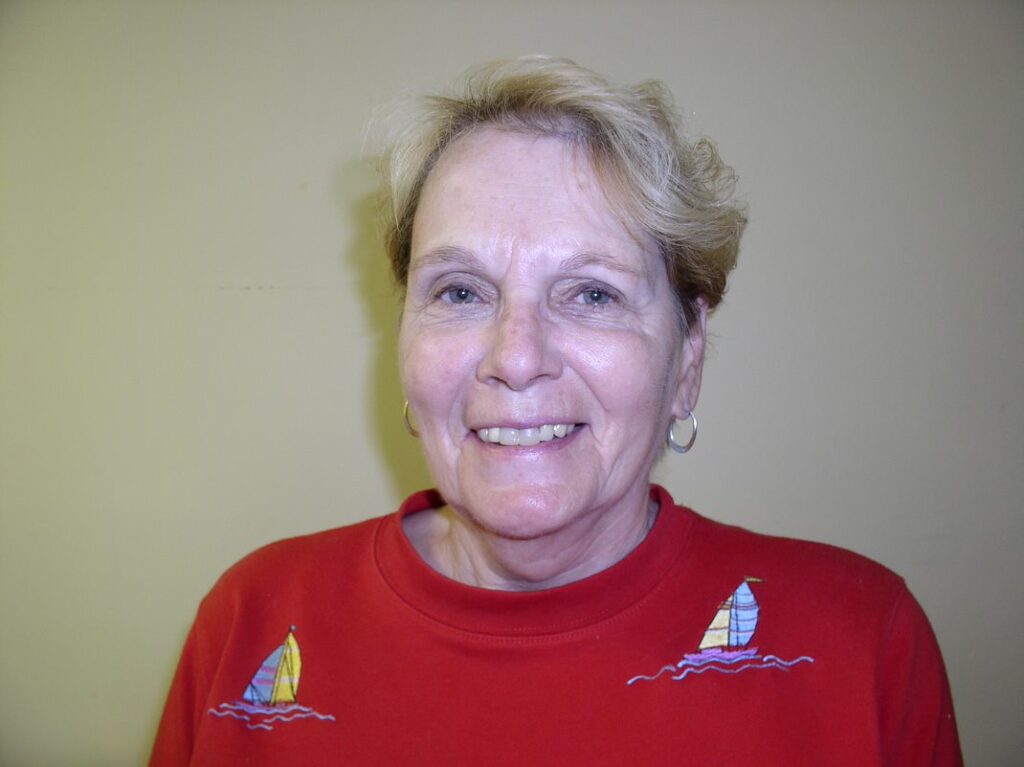
Written by: Karen Bell, Michele Salsgiver, and Christy S. Renjilian
Have you ever struggled financially?
Maybe you were in between jobs. Maybe you lost a job due to attendance or layoff. Or maybe your health was suffering, and you were simply unable to keep up with your career.
If so, you’re not alone.
The U.S. Bureau of Labor Statistics reported the unemployment rate in the US reached 14.8% in April 2020 after federal and local governments shut down the economy. The highest rates since the Great Depression.
And since then, it’s down. The latest reports show December 2021’s unemployment rate was at 3.9%, still higher than pre-pandemic levels: 3.5% from February 2020.[1]
It’s hard to climb out of debt, out of financial strain. But if you have a child or children to care for, it can feel next to impossible.
And the reality is the pandemic in America disproportionately impacted families.
A Brookings Institute article revealed 44% of U.S. families in 2019 did not earn an income that was high enough to cover their families’ living expenses. Markedly, families headed by women (53%), Black (58%), and Latino or Hispanic (57%) individuals and individuals without a high school diploma (65%) are much more likely to be struggling economically.
But the COVID-19 pandemic brought the low-wage crisis to new heights, as unemployed and underemployed low-wage workers—particularly women and people of color—faced severe economic insecurity. In the depths of the COVID-19 pandemic, the economy shed low-wage jobs at eight times the rate of high-wage jobs.[2]
We knew the impact of the pandemic wasn’t equal from home to home, but this information shines a light on the true crisis at hand.
And that’s where Child Care Works can help. It helps low-income working families pay for child care and be able to keep their job or find a new one.
It’s so, so needed.
What is Child Care Works?
Child Care Works is a federal subsidy program that helps eligible, low-income families pay for some or all of the child care costs incurred when parents are employed and/or in training.
Families are determined to be eligible based upon their family size, income, and verification of employment (or a combination of employment and training).
It helps homeless families and teen parents, too. Also, parents of an older child with a physical or emotional disability may be eligible to qualify for subsidized child care services through the age of 18.
In the state of Pennsylvania, Child Care Works is funded through the PA Department of Human Services. And funds are paid directly to the child care program.
Here in central Pennsylvania, Community Connections for Children, Inc. (CCC) manages the subsidy program as the Early Learning Resource Centers for Regions 9 & 10. As the ELRC, CCC serves Adams, Cumberland, Dauphin, Lancaster, Lebanon, Perry and York counties.
CCC reviews and approves applications, answers questions, helps families find quality care, and is the go-to early childhood education resource.
The CCC team has over 165 combined years of experience in working with this program and helps approximately 5,000families annually. The organization serves as the conduit for over $90 million dollars.
We all know that quality child care is expensive, yet it is the foundation for a child’s development. And that families need to be able to work to support themselves. This program is the catalyst to meet all of those needs.
“In my travels all over the world, I have come to realize that what distinguishes one child from another is not ability, but access. Access to education, access to opportunity, access to love.”
— Lauryn Hill
The bottom line is this: Child Care Works matters. It connects children with excellent care that their parents may not be able to afford on their own.
Success with Child Care Works
Child Care Works is an economic lifeline to better opportunities for low-income families and their children. And it can be emotional. Tears are often shed when struggling parents learn they can access help.
And success looks different for each child and each situation.
At Community Connections for Children, Inc., we’ve seen families gain peace of mind because they are confident that their children are being well cared for.
And other families break the multigenerational impact of poverty, setting their children up for success in both school and life.
When a child graduates from high school to pursue his life goals, after having a strong early childhood foundation, it gives us a great sense of purpose and a renewed hope for our future.
We’ve seen clients outgrow and outearn the program, no longer needing financial help. And some who have gone from homeless to financially secure.
It’s all success. And it’s all changing lives.
A client just this week sent the following note:
“As our time with Child Care and CCW has now come to an end, I wanted to take this opportunity to personally thank you and the entire staff who have so kindly and graciously helped and supported my two daughters and myself over the past 11 years! Because of your efforts and dedication, I—a single working mother with two jobs and two children—was able to work to provide for my daughters knowing they were in good care. The work you do is truly invaluable and makes a difference in the lives of so many. Please take good care and thank you for everything! I will always remember your kindness.”
And a caseworker with Community Connections for Children, Inc. shared the following recap after talking with a father in the program:
“I just wanted to share with everyone that I spoke with a client who happens to be the child’s father and he was very complimentary of our team and how we treat fathers. He stated that he often gets treated differently because he is not the mother and usually has to jump through hoops to get ‘the same rights and privileges’ as the child’s mother but that we have gone the extra mile to make sure he is treated equally and fairly. He said that from the time he applied, everyone at our office has been very helpful and respectful and he is very grateful.”
It’s always a joy to celebrate a client who reaches a personal milestone.
Recently, a Community Connections for Children, Inc. team member shared that her client started out with the program as a teen parent, transitioned to being a low-income adult client, and stayed in the program until she graduated college and became a Registered Nurse.
It often comes full circle. Child Care Works has a big impact on parents and their children. And on our collective future and regional economy.
Keeping children in quality childcare for as long as possible is a priority. And it’s a team approach at Community Connections for Children, Inc.
How to Apply for Child Care Works
If you or someone you know is interested in applying for Child Care Works, please visit https://cccforpa.org/for-families/paying-for-care/.
The process can take up to 30 days and starts with a parent or guardian completing an application that verifies employment, income, address, and family composition.
Once the application is reviewed and found eligible, the next step is a face-to-face appointment, where the parent reports their childcare provider or requests a child care referral. Once they indicate their choice of provider, the child is enrolled in the program.
At that time, the child is scheduled for care based upon the families’ work/training schedule and need for care. Families are assessed a co-pay, which they pay directly to the child care provider. The child care provider submits an attendance invoice each month to Community Connections for Children, Inc, which is then reviewed with the payments for childcare being paid directly to the provider.
And each year, the family must complete a Redetermination to continue in the program.
At Community Connections for Children, Inc., our team is comprised of Intake Specialists, Subsidy Specialists, STARS Coaches and Technical Assistants, Resource & Referral Specialists, Provider Liaisons, and Finance Assistants to ensure you and your child have a seamless experience.
And at the heart of a successful program are relationships. It’s important that we care and work to develop a supportive relationship with each client, getting to know them and their unique situation, and serving as a resource for their child care questions and concerns.
A hopeful future for all children and families
At Community Connections for Children, Inc., we hope that all children are fully supported and nurtured. We hope that every child is given the opportunity and space to explore their interests and have a stable place to play, learn, develop, and make those lifetime connections.
It’s important to us that the children we serve have a quality education that will follow them for the rest of their lives. And that they are cared for and educated in an environment that promotes success for each and every child.
We hope that each parent and guardian knows they are both strong and courageous as they work to make a better life for their child. And that there is a community of people rallying for their success.
Reaching out for help can be hard. We value each parent and guardian and take pride in working hard to help the children in our regions succeed.
Sources
[1] The Balance: What Is the Current U.S. Unemployment Rate?
About Community Connections for Children, Inc.
Community Connections for Children, Inc. (CCC) is a nonprofit centered in the heart of Pennsylvania. They serve childcare providers and low-income families ‒ the ones that have been impacted the most by the pandemic.
For you and your business, CCC helps keep childcare options open for your employees ‒ saving missed work hours and lowering on-the-job stress levels. They work with early childhood education programs and home-based providers to improve the quality of care, ensuring that all children enter school ready to be successful.
Christy Renjilian serves as its Executive Director.
Karen Bell serves as the Child Care Works Manager and Michele Salsgiver serves as the Eligibility Manager.
To learn more, visit childcareconsultants.org.








